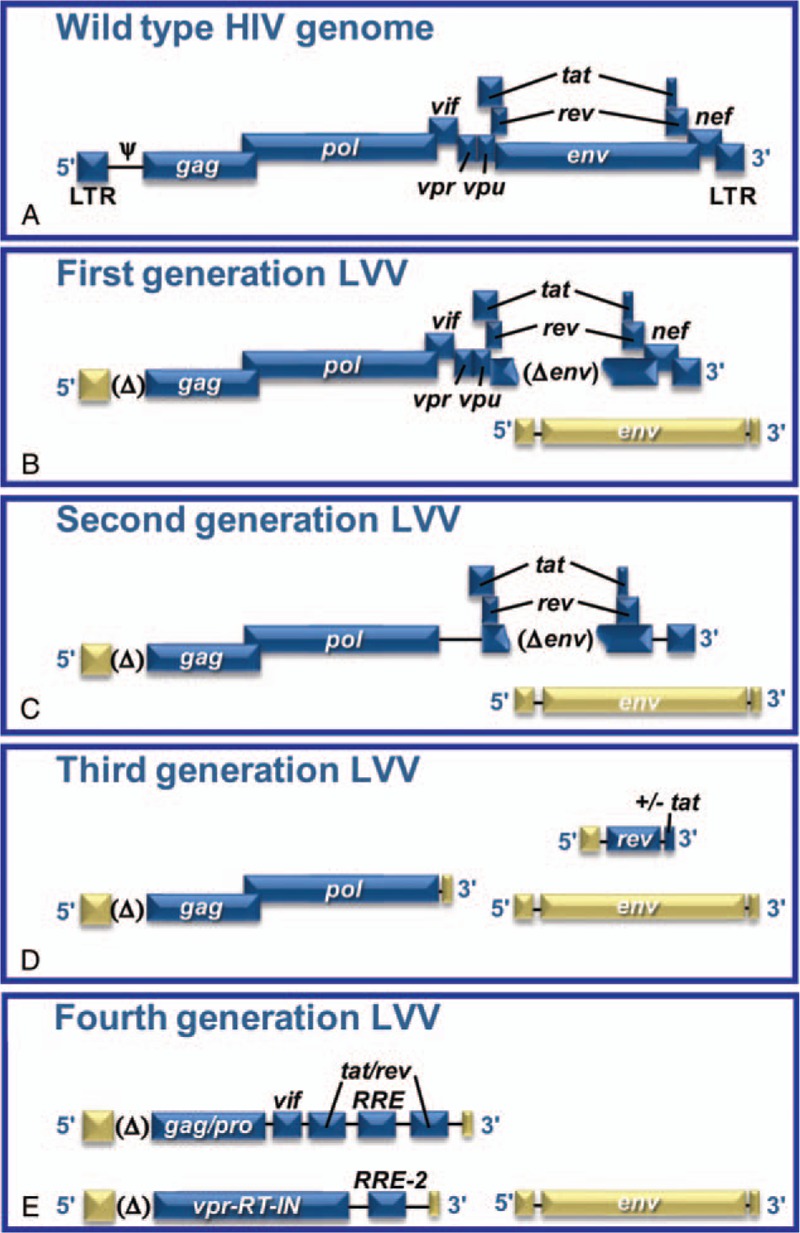FIGURE 1.

The development of LVV packaging systems from HIV. A, Wild-type HIV genome with all of its genes and regulatory elements provides the backbone for LVVs. B, First-generation LVVs removed the envelope protein and the psi packaging signal and incorporated a heterologous promoter to reduce recombination potential. C, Second generation of LVV removed accessory genes (vif, vpr, vpu, and nef) to reduce the virulence of any potential replication-competent retrovirus. D, Third-generation LVV eliminated the transactivator gene, tat, and split the vector into three plasmids to reduce further recombination potential, retaining only the three genes necessary for transgene expression (gag, pol, rev). E, Fourth-generation LVV split the gag and pol onto separate plasmids to reduce even further recombination potential. This generation added back some HIV genes to enhance transduction efficiency and transgene expression.
